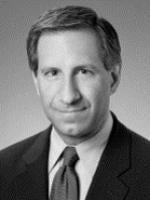In Bricklayers & Trowel Trades Int’l Pension Fund v. Credit Suisse Sec. (USA) LLC, No. 12-1750, 2014 U.S. App. LEXIS 8994 (1st Cir. May 14, 2014), the United States Court of Appeals for the First Circuit affirmed a district court’s exclusion of an event study as unreliable under Daubert v. Merrell Dow Pharm., Inc., 509 U.S. 579, 597 (1993). Plaintiffs, AOL shareholders, had offered the event study to show that alleged misstatements by defendant Credit Suisse First Boston (“CSFB”) ultimately caused declines in AOL’s stock price. The First Circuit agreed that plaintiffs’ expert, Dr. Scott D. Hakala, in performing the event study, failed to examine relevant “event dates,” classified certain dates as relevant even though the disclosures on those dates largely repeated previously disclosed information, and failed to control for confounding factors. As plaintiffs’ loss causation evidence consisted entirely of the event study, the First Circuit also affirmed summary judgment on behalf of CSFB. Notwithstanding the common and widely accepted use of event studies in securities cases, Bricklayers reminds practitioners of the need to fully scrutinize event studies under Daubert admissibility rules.
CSFB’s research analysts covered AOL stock and, in regularly published research reports, issued “target prices” for the stock. AOL shareholders alleged that CSFB’s research reports misrepresented its analysts’ true opinions about AOL, allowing AOL’s stock to trade at artificially inflated prices. They sued CSFB under Section 10(b) of the Securities Exchange Act of 1934, 15 U.S.C. § 78j(b), and Securities & Exchange Commission (“SEC”) Rule 10b-5, 17 C.F.R. § 240.10b-5. In response to CSFB’s motion for summary judgment, plaintiffs proffered Dr. Hakala’s event study. That study, for certain selected “event dates,” purported to distinguish price movements resulting from general market conditions from movements attributable to company-specific events. Using this study, Dr. Hakala purported to show a connection between the allegedly false research reports and drops in AOL’s stock price once information regarding AOL’s true financial condition reached the market. CSFB attacked the event study as unreliable under Daubert. The United States District Court for the District of Massachusetts agreed, excluding the event study and granting CSFB summary judgment.
In affirming, the First Circuit determined the event study suffered from three substantial flaws. First, like the trial court, it observed that a number of the 57 event dates Dr. Hakala deemed relevant to his study failed to align with any alleged disclosures in the complaint. Indeed, the court found a “complete disconnect” between the event study and the complaint, leaving the court “guessing” as to how Dr. Hakala selected the event dates. It noted that the study seemed “more concerned simply with identifying abnormal market movement than in supporting the shareholders’ causation allegations.” To the extent that selected dates failed to correspond to the complaint, they simply “d[id] not ‘help the trier of fact.’”
Second, the First Circuit found that a number of the selected event dates concerned published references to previously disclosed information, thus allowing Dr. Hakala to attribute AOL stock-price declines to information that was not new. The First Circuit determined that Dr. Hakala repeatedly ignored the efficient market principle by attributing price fluctuations to previously disclosed information. In an “informationally efficient” market, however, “all publicly available information is impounded in [the] price” rapidly after the information is disseminated. Plaintiffs had previously availed themselves of this principle by invoking the fraud-on-the-market presumption of reliance to obtain class certification. This same principle necessarily applied to Dr. Hakala’s event study, where the time lag between the original disclosures and the proposed event dates ranged from one day to roughly a month. According to the First Circuit, “the event dates occurred after an efficient market would have processed the news.”
The AOL shareholders attempted to salvage Dr. Hakala’s work by arguing that the event-date disclosures at issue included at least some information not included in the original disclosures. The First Circuit agreed with plaintiffs that the event-date disclosures did not merely “parrot” previously released information. Yet, it found that these disclosures “did no more than to provide gloss on public information” and so could not have moved AOL’s share price in an efficient market.
Finally, the First Circuit observed that confounding factors, such as news stories, statements or events, coincided with a number of event dates and potentially affected AOL’s stock price on those dates, which impacted the event study’s reliability. The court agreed that proof of loss causation required plaintiffs to show that CSFB’s alleged reports, as opposed to some other news stories, moved the stock price on any given day. It also agreed that Dr. Hakala had offered no reliable means to address this. Rather, he simply made a subjective judgment call as to the effect of confounding information on the stock price “without any methodological underpinning.” Although some subjective judgment calls are necessary when crafting an event study, “a subjective analysis without any methodological constraints does not satisfy the requirements ofDaubert.”
Although five of the 57 event dates remained after the application of Daubert, the First Circuit held the district court did not abuse its discretion in treating the entire study as inadmissible. And because the plaintiffs needed to show a connection between CSFB’s deceptive practices and the drop in AOL’s stock price, and relied exclusively on Dr. Hakala’s event study to do so, there was no genuine dispute as to loss causation. The First Circuit affirmed the award of summary judgment to CSFB.
Bricklayers demonstrates the effective use of Daubert to attack an event study on multiple fronts that, cumulatively, allow for the exclusion of the entire study.



 />i
/>i

